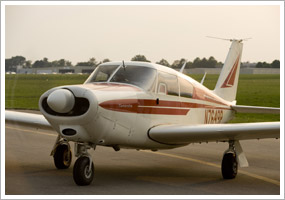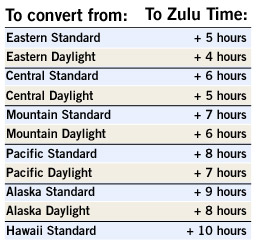| ||||
| | FT News | Inside AOPA | TRAINING PRODUCTS | FINAL EXAM | |||
TRAINING TIPs Rules of the runup You familiarized yourself with taxi routes, heeded signs you encountered along the way, and arrived at the assigned takeoff runway, taxiing at safe speed as discussed in the Feb. 27 “ Training Tip.” Now it’s time to perform an engine runup and the other pre-takeoff checks. Well—that’s how you visualized departing from this busy airport that was the destination on your solo cross-country.
But there’s a surprise: Unlike other airports you’ve visited, the runup area is not immediately adjacent to the runway threshold. It’s possible that considerable time might pass between runup and departure. Many student pilots facing this situation wonder: “Should that change the way I should do my pre-takeoff checks?”
Great question! Indeed, making this kind of strategic decision helps satisfy the before-takeoff check and airport-operations tasks in the Private Pilot Practical Test Standards.
No change in procedures should compromise safety or cause you to forget a step in your pre-takeoff preparations (such as activating the transponder). One solution to discuss with your instructor is learning to use a “segmented checklist” described by Ralph Butcher on the AOPA Flight Training Web Site in “ Before Takeoff Checklist—Understanding the Benefits of Segmented Checklists”: “The before-takeoff checklist is meant to be completed down to ‘final items’ after you conduct the engine runup and systems checks. This stopping point is convenient when there are takeoff delays or when the runup area is not located at the end of the active runway. You go on to complete the final items when you are number one for takeoff, with the exception of lights, camera, action. These items are executed when you are cleared onto the runway for takeoff,” he wrote. (“Camera” refers to the transponder. “Action” means checking engine instruments during takeoff.)
Sometimes at airports where no fixed runup area exists, it’s necessary to perform checklists at unusual locations. For example: “To contain aircraft noise within airport boundaries, avoid performing engine runups at the ends of runways near housing developments. Instead, select a location for engine runup closer to the center of the field,” advises one of 13 noise-awareness recommendations in AOPA’s Handbook for Pilots .
Safety first! Then make the needed adjustments for the layout of airports you visit. YOUR PARTNER IN TRAINING
Did you know that student pilots who join AOPA are three times more likely to complete their flight training? Membership includes unlimited access to aviation information by phone (800/USA-AOPA, weekdays from 8:30 a.m. to 6 p.m. Eastern time) or from AOPA Flight Training Online or AOPA Online. If you're not already a member, join today and get the pilot's edge. Login information is available online.
FLIGHT TRAINING NEWS Thousands attend Women in Aviation conference With jobs and the economy on everyone’s minds, the twentieth annual Women in Aviation International (WAI) conference, held last week in Atlanta, nonetheless drew nearly 3,000 attendees. “Companies and organizations continue to hire, and we had active career recruiting by many of our exhibitors, especially for mechanics and technicians, but also for pilots, air traffic controllers, and other positions as well,” said WAI President Peggy Chabrian. A highlight of the conference was the presentation of AOPA’s 2009 Get Your Glass Sweepstakes Archer to winner Karoline Amodeo, a 25-year-old private pilot from Hopewell Junction, N.Y. Embry-Riddle to host national training symposium Embry-Riddle Aeronautical University will host the 2009 National Training Aircraft Symposium March 16 through 20 at its Daytona Beach, Fla., campus. The symposium includes exhibits by manufacturers of training aircraft, flight training devices, and support products. There will be lectures, panels, and workshops on safety management systems and NextGen air traffic management. For more information or to register, see the Web site or contact Stephanie Moore at 386/226-6836. Colorado flight school aims to train missionary pilots A flight school in Colorado Springs, Colo., has a unique goal: to train missionary pilots who will work in Afghanistan for the aviation affiliate of a Christian international ministry. The Youth With A Mission Aviation Flight Academy will begin training five students using an aircraft purchased with donations, according to a report in the Colorado Springs Gazette . The students will train for three months before traveling to Afghanistan to help rebuild that nation’s civil aviation system, said Ray Siebring, co-founder of the group and school. Phoenix flight school revamps Web sitePhoenix, Ariz.-based TransPac Aviation Academy recently overhauled its Web site in conjunction with enhancements to its professional pilot training programs. Formerly known as Pan Am International Flight Academy, TransPac Aviation Academy said it is adding 18 new instructors and forging stronger relationships with high schools and colleges across the country as part of a transformation process that includes plans to expand into new markets.
Inside AOPA Continue our partnership, Fuller tells ait traffic controllers Pilots and controllers need to work together to make the system safer—and to defeat user fees—AOPA President and CEO Craig Fuller said March 4 at the National Air Traffic Controllers Association “Communicating for Safety” conference in Las Vegas. “The big issue that we’ve been working on together is getting the FAA funding bill passed,” Fuller told the controllers, adding that user fees, as suggested in the Obama administration's budget, are not the way to go. Read more >> Think you can’t afford a vacation this year? With great rates on airfare, hotels, and cruises through AOPA Online Travel, you may find that you don’t have to sacrifice your vacation this year after all. You can even save on your car rental from Alamo, Avis, and Hertz with special AOPA discounts and members-only coupons for free rental days, dollars off, and free upgrades. A portion of all the revenue generated is returned to AOPA and reinvested to fund our efforts to maintain the freedom, safety, and affordability of general aviation.
TRAINING PRODUCTSKing Schools updates online icing operations course In the wake of the crash of a commuter jet that may have been attributable to airframe icing, King Schools Inc. announced it has updated its Icing Operations online course to include more information on tail-plane stall recognition and recovery. Those who purchased the previous version of the course can get a free update. The course sells for $249. See the Web site or call 800/854-1001.
Note: Products listed have not been evaluated by ePilot editors unless otherwise noted. AOPA assumes no responsibility for products or services listed or for claims or actions by manufacturers or vendors.
FINAL EXAMQuestion: My instructor and I are flying into a Class B airport next week. I know I need a transponder with Mode C capabilities. But why do I need it, and how do I know if my transponder has Mode C?
Answer: Mode C is the technology that transmits your aircraft’s altitude onto the air traffic controllers’ radar scopes. Because of the increased amount of traffic in Class B airspace, it’s important for controllers to know at precisely what altitude you are flying. You can verify that your transponder has Mode C capabilities by referencing the current weight and balance equipment list for your aircraft. To learn more about Mode C transponders, check out this article from AOPA Flight Training .
Got a question for our technical services staff? E-mail to [email protected] or call the Pilot Information Center, 800/872-2672. Don't forget the online archive of "Final Exam" questions and answers, searchable by keyword or topic.
Picture PerfectPilots love to take photos, and they love to share them with other pilots. Now you can upload your flying photos to our brand-new online gallery, "Air Mail." Share your special aviation images, or view and rate more than 1,000 photos and counting. Highly rated photos will get put into rotation on the AOPA home page!
AVIATION EVENTS & WEATHER To submit an event or to search all events in the calendar, visit AOPA Online. For airport details, including FBO fuel prices, see AOPA's Airport Directory Online. Flight Instructor Refresher ClinicsThe next AOPA Air Safety Foundation Flight Instructor Refresher Clinics are scheduled in Ontario, Calif., March 14 and 15; Orlando, Fla., and Virginia Beach, Va., March 21 and 22; San Mateo, Calif., March 28 and 29; Atlanta, Ga., Northbrook, Ill., Salt Lake City, Utah, Ashburn, Va., April 4 and 5. For a complete schedule, see AOPA Online. Can't make it in person? Sign up for the CFI Refresher Online. AOPA Air Safety Foundation Safety SeminarsAOPA Air Safety Foundation Safety Seminars are scheduled in Bolingbrook, Ill., Bedford, Mass., and Cleveland, Ohio, March 10; Peoria, Ill., and Whitehall, Ohio, March 11; Rockford, Ill., and Indianapolis, Ind., March 12; Birmingham, Ala., March 16; Marietta, Ga., March 17; Randolph, N.J., March 19. Topics vary—for details and a complete schedule, see AOPA Online. | Got news? Contact ePilot. Having difficulty using this service? Visit the ePilot Frequently Asked Questions now at AOPA Online or write to [email protected]. |
|
Member Tools : Send feedback | Update member profile | Change email address | Unsubscribe | ePilot Archive Editorial Team : ePilot Editor: Alyssa Miller | Contributors: Warren Morningstar, Alton Marsh |

 Daylight-saving time returns Sunday, March 8, so remember to set your clocks forward this weekend. And when it comes time to file a flight plan, don’t forget that the conversion between Zulu and your local time will change. Here’s a chart to help you make the adjustments. And enjoy! Longer spring days mean more daylight hours for flying, so dust off your skills with an after work proficiency flight.
Daylight-saving time returns Sunday, March 8, so remember to set your clocks forward this weekend. And when it comes time to file a flight plan, don’t forget that the conversion between Zulu and your local time will change. Here’s a chart to help you make the adjustments. And enjoy! Longer spring days mean more daylight hours for flying, so dust off your skills with an after work proficiency flight.

